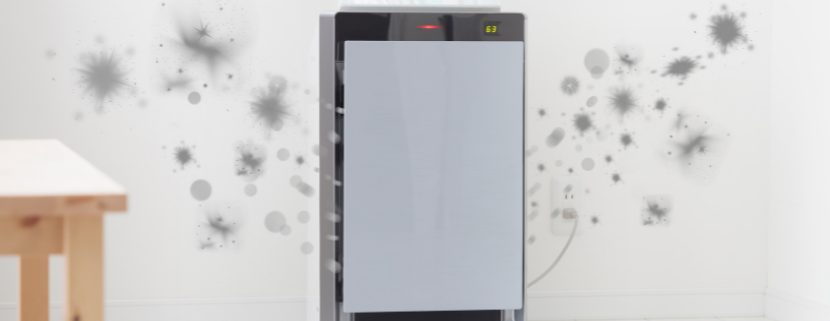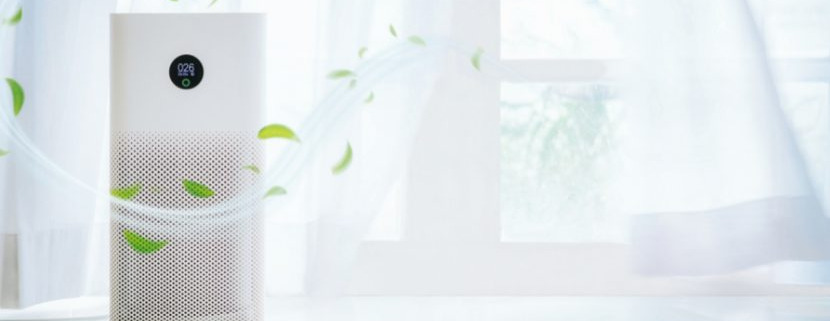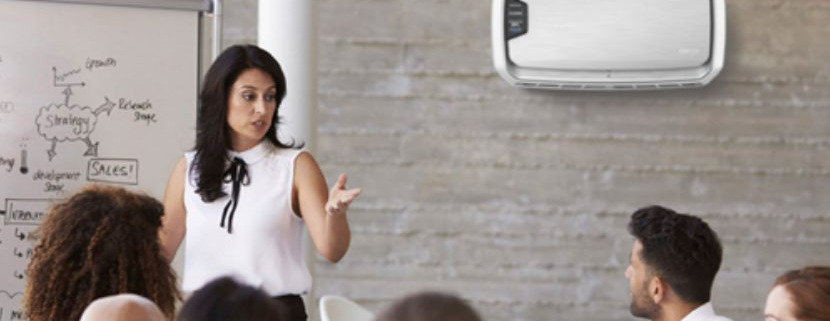Why you should consider an Air Purifier for the Office?
With the effect of the global pandemic from the initial strain, to the Delta and Omicron variants, ventilation and indoor air quality has never been more important. With all the varying information regarding air purifiers, purchasing one can seem quite overwhelming but don’t worry, we’ve de-mystified everything that you need to know to help you find the perfect solution.
What is an air purifier?
An air purifier cleans the air through the use of a filter, or filters removing contaminants and pollutants such as dust, pollen, smoke and dangerous airborne viruses and bacteria. Air purifiers also help to reduce the chances of health issues caused by air pollutants, such as respiratory problems, neurological problems or the aggravation of asthma.
Typically, filters are made of paper, fibre, fibreglass or mesh and they require regular replacement to maintain efficiency. Other filters are reusable and will need regular washing for optimal usage.
Air purifiers help to reduce the spread of Covid-19
Germs and pollutants thrive indoors due to the lack of circulation, meaning rooms that have poor ventilation can become a breeding ground for bacteria and viruses. Specific air purifiers with the HEPA filter have been proven to reduce airborne viruses such as Covid-19. A HEPA filter can remove 99.97% or more of airborne particles that are sized 0.3 microns and larger…these filters can be effective in removing Covid-19 particles within the air.
How to choose the right indoor air purifier?
Every air purifier has different factors and features that affect its usage and its effectiveness against domestic pollution, so before buying an air purifier for your workspace it’s important to compare the features to ensure it can meet your requirements.
A good air purification system can clean the air of viruses, bacteria, allergens, and VOC’s (volatile organic compounds).
Reviewing the filtration levels is also an important factor when considering which air purifier will be right for your indoor space. Take a look below to view some of the key criteria to look out for when purchasing an air purifier:-
- CADR (clean-air delivery rate) rating – This calculates the rate at which the purifier extracts dust and pollen.
- Clean air changes per hour – Airflow rate relative to the room size and depends on the quantity of people in a room and environment but between 3 and 6 is recommended and up to 10 in places such as hospitals.
- Speed of aerosol reduction – SAGE suggest in their paper Ventilation Actions summary that if there are 6 air changes per hour, 95% of contaminants in the air would be removed in 30 minutes.
- Size guidelines – For high efficiency, get the right model for your room size. Opt for a model that is designed for a larger space. Consult with your supplier and ask for assistance calculating which models are suitable for your space and how many purifiers you will require to improve ventilation and air quality.
- Efficiency of filters – HEPA Filters – HEPA13 and HEPA14 have the highest filtration for viruses and are an industry standard for quality air purifiers. They are effective at removing the smallest of particles like dust, dander, pollen, mould and other common allergens that can be found in the work place.
- Carbon filters – These make a considerable difference to the removal of odours within a room.
- Filter only or filter and decontamination? Some air cleaners are filter only and some decontaminate any bacteria or viruses that have been drawn into the filters using a steronizer, heat or ultraviolet light.
- UV Light – As mentioned above, some filters will capture airborne particles and some will go to the next step and have a process to kill bacteria and viruses using a heat decontamination or UV light process.
- Intelligent Sensors – Some air purifiers have built in sensors which scan a room and will automatically commence air cleaning when air quality drops and other units will notify you when air quality falls below a set figure.
- Location – Being able to correctly locate an air purifier is essential for high function, since most air purifiers have an intake near the front of the machine, you will want the unit to be in a suitable position to access key parts of the room close to the occupants or have more than one unit to ensure it has access to the many airborne particles.
- Portable – Consider where you would like the air cleaner to be located and if it would help to be portable. Wall mounted, table top and floor standing machines are available and you can also purchase units on wheels.
- Noise Level – 68 dB or below is considered safe and all air purifiers will have the noise level within the description and normal conversation is around 60bD https://www.commodious.co.uk/knowledge-bank/noise/measuring-levels
- Cost – Units can range from £100 to a few thousand pounds.
- Maintenance – Filter change frequency is typically annually or every six months. Some can be carried out in-house and some will require a professional to remove and change the filter. Typically, the higher than fan speed, the more maintenance will be required.
- Air Quality Monitoring & Reporting – Air quality reporting can be provided for some models which may be useful for potential litigation purposes.
- Environmental impact of the unit – All air purifiers will have an impact on the environment, however, finding one that has features that will lower that impact can be important.
- Testing & certification – Check what laboratory testing has been carried out and some manufacturers have white papers on their products.
We hope the above has provided some useful tips to consider before purchasing an air cleaner for your indoor setting. To find out more about air purifiers and lease plans, please don’t hesitate to get in touch.







